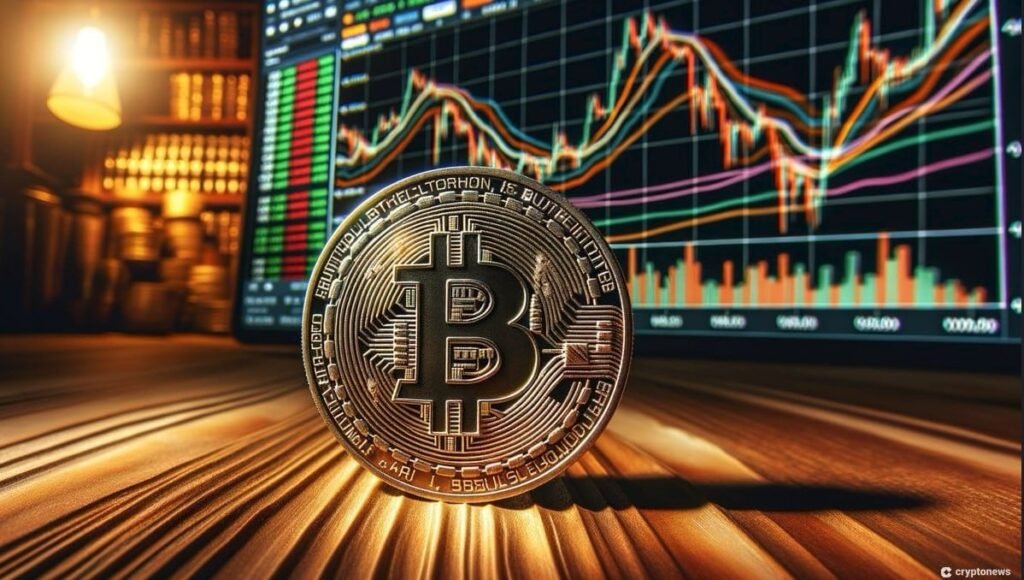Bitcoin is a decentralized digital asset. This is a new type of asset that joins the ranks of traditional assets such as cash, gold and real estate.

How do you buy bitcoins?
If you don’t want to mine bitcoins, you can buy them on a cryptocurrency exchange. Most people won’t be able to buy all of BTC due to its price, but you can buy portions of BTC on these exchanges in fiat currency such as US dollars. For example, you can use Bitcoin on Coinbase by creating and funding an account. You can fund your account using your bank account, credit or debit card. The following video explains more about buying Bitcoin.
First block
On January 3, 2009, the first Bitcoin block, was mined. It is also known as the “genesis block” and contains the text: “The Times, January 3, 2009. Chancellor on the threshold of second bailout for banks.” this may be evidence that the block was mined on or after that date.
Awards
Bitcoin rewards are halved every 210,000 blocks. For example, in 2009, the block reward was 50 new bitcoins. On May 11, 2020, the third halving occurred, reducing the reward for opening each block to 6.25 bitcoins. The next halving is expected to occur sometime in 2024, bringing the reward down to 3.125 Bitcoin.
How is Bitcoin used?
Bitcoin was originally developed and released as a peer-to-peer payment method. However, its use cases are growing due to its growing value, competition from other blockchains and cryptocurrencies, and developments in blockchains that process information for the Bitcoin blockchain.
How does Bitcoin make money?
Miners on the Bitcoin network can be rewarded for successfully opening blocks. Investors and speculators can make money by trading Bitcoin.

About Bitcoin (BTC)
Bitcoin is one of the most popular cryptocurrencies on the market. Bitcoin, first introduced in 2009 by Satoshi Nakamoto, has ranked number one in the cryptocurrency market by market capitalization. Bitcoin paved the way for many existing altcoins in the market and marked a turning point for digital payment solutions.
Bitcoin has come a long way in terms of its value. However, you don’t have to buy all of Bitcoin, as Bitcoins can be divided into small units called satoshis, named after the creator. Satoshi is equivalent to 0.00000001 Bitcoin.
There is no physical BTC token, so Bitcoin works as a digital currency. Bitcoin transactions are completely transparent and uncensorable, providing a global, censorship-resistant environment for financial exchange. It is a financial system maintained by a decentralized network of computers known as “nodes” rather than a centralized banking or government organization, thereby promoting “decentralization“.
Why is the price of Bitcoin so volatile?
The price of Bitcoin has been very volatile since its inception due to several factors. First, the cryptocurrency market is smaller and not as actively traded as traditional markets, so large trades can result in significant price fluctuations. Secondly, the value of Bitcoin depends on public sentiment and speculation, which leads to short-term price changes. Media coverage, influential opinions and changes in legislation create uncertainty, affecting supply and demand dynamics and contributing to price fluctuations.
Another key factor is Bitcoin’s fixed supply. Since only 21 million Bitcoins have ever been minted, shortages could lead to wild price changes as demand changes. The situation is made worse by “whales,” or large holders of Bitcoin, whose large transactions can significantly impact the market.
When was Bitcoin created?
Bitcoin was created in 2009 by an unknown person or group of people under the pseudonym Satoshi Nakamoto. The digital asset is based on a decentralized peer-to-peer network and blockchain technology, which allows users to send and receive transactions securely and anonymously without intermediaries. Satoshi Nakamoto published a white paper on Bitcoin in 2008, outlining the design and principles of the cryptocurrency. The first Bitcoin transaction, 10 Bitcoins to a developer, took place on January 12, 2009. Since then, Bitcoin has gained popularity as an alternative store of value and payment system, transforming the financial industry.
Who created Bitcoin?
The creator of Bitcoin remains a mystery, known onlypseudonym of Satoshi Nakamoto. The Bitcoin innovation began in 2008 when Nakamoto published a white paper that described the cryptocurrency’s decentralized peer-to-peer structure and use of blockchain technology. In 2009, Nakamoto mined the first block of Bitcoin, and on January 12 of the same year, the first Bitcoin transaction took place. Despite numerous investigations and speculations, the true identity of Satoshi Nakamoto has never been revealed.
Bitcoin halvings occur approximately every four years, when the rewards Bitcoin miners receive for mining blocks are cut in half. The halving was built into the Bitcoin protocol to preserve its value as a deflationary currency. By reducing the supply of new Bitcoins, the protocol aims to prevent Bitcoin from devaluing over time, which often happens with inflationary currencies.
Will Bitcoin Halving Affect the Price of BTC?
Historically, Bitcoin’s price has tended to rise in the months leading up to a halving as investors and traders anticipate a supply shock. After the halving, the price may continue to rise if demand remains high and exceeds the reduced supply. Other factors such as market sentiment, regulatory changes and global events can also affect the price of Bitcoin. Follow our Bitcoin halving countdown to learn how the Bitcoin halving works.
The current price of Bitcoin (BTC) is updated and available in real time on Binance.